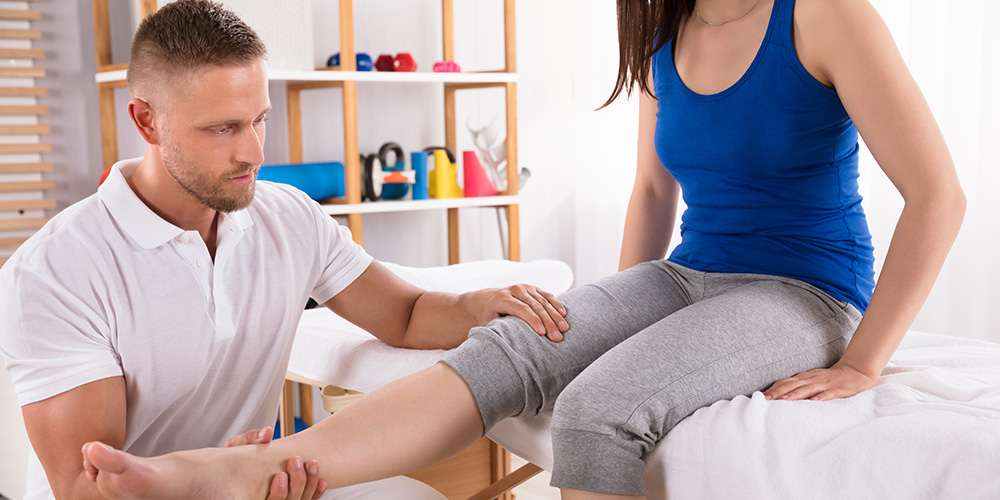
How Can Physiotherapy Help Osteoarthritis? What You Need to Know
Friday, September 27, 2019
What is osteoarthritis?
Osteoarthritis (OA) has historically been described as a disease of the cartilage and physiotherapists often hear patients describe OA as ‘wear and tear' of their cartilage, as a result of their age.
Over the last decade however, research has shown us that this is not necessarily the case.
Many people assume that OA is only a disease of the cartilage. However, the cartilage breakdown is effectively an end-stage result due to sub-optimal joint function. Hence, a more correct definition of OA is a joint condition that can affect any part of the joint, whether that be tendon, muscle, nerves, bone, ligament, or synovial fluid.
Changes to any of these tissues will change the way the joint functions, with the common end-stage result being breakdown of the cartilage.

Stats on Osteoarthritis in Australia
Osteoarthritis is the most common form of arthritis in Australia with 1 in 11 Australians suffering from OA symptoms. That's approximately 2.2 million people or 9.3% of the population.
Additionally, 1 in 10 of these OA sufferers self-reported to be in poor health and 3 out of 5 of those with OA are women. And in the last decade, there has been a 38% rise in knee replacements as a result of OA.
Clearly, OA is not something to mess with. So, let's talk about the causes and how a physio can help.
What causes OA?
In short, we don't completely understand what causes OA in all cases, but here is what we do know. There is a wide array of factors that can lead to the same end-stage (cartilage breakdown). The most common are as follows:
- Genetic predisposition: We aren't entirely sure what it is about genetics, but the current theories include hereditary ligament laxity, poor joint mechanics, and an altered composition of synovial (joint) fluid.
- Gender: Middle age females have a much higher incidence of OA, thought to be linked with a drop in estrogen levels (acts as an anti-inflammatory), and ligament laxity.
- Obesity: It was once thought that the main reason obesity lead to OA was because of the high loading of the joints. While there is likely a biomechanical aspect, the bigger problem is that fat acts as an exocrine organ and releases a hormone (leptin). High levels of leptin are not advantageous for cartilage health.
- Joint Trauma: Sprains/fractures/tears. Take, for example, something as simple as a ligament sprain in your knee. The primary role of ligaments is to provide stability to a joint. One critical way ligaments do this is by sending information to the brain when it is stretched. If you change the ligament (i.e., sprained ligament), you change the signal. If you change the signal, you change the way the joint functions. Over time, these minor changes to the way in which a joint function can result in end-stage cartilage break-down.

Who cares?
As a physiotherapist, this information is great, but does this new knowledge change anything clinically? So far, we have said that OA shouldn't be thought of as wear and tear, neither is it age dependent (it is correlated with age for some, but not caused by age. Big difference!)
This is what changes clinically: The research has shown that OA is not simply a wear and tear problem. Your body is not like a car, where you start off with brand-new brake pads that wear out over time. Your body is in a constant state of breaking down and remodelling your body.
Over the course of 7 years, most of the cells in your body have been completely replaced. This is a normal process which allows for growth, healing, and adaptation.
For joint tissues to adapt, it needs to be loaded. Wolff's Law states that bone grows and remodels in response to the forces that are placed upon it (the same principle is true for other tissues in the body).
Your muscles, ligaments, bones, tendons, cartilage love to be loaded - it's how we achieve change!
Our job as physios is to help you achieve optimal loading. Too much load and your tissues will break down faster than they can recover. Too little load and your tissues won't have an effective stimulus to remodel.
With that in mind, perhaps the single most important piece of advice you could give to a person with OA is to MOVE! The moment you listen to the advice that movement is making your OA worse is the moment you have lost the battle.
If a healthcare specialist told you that your heart only had a finite number of beats left and to not “use them up too quickly”, you would probably laugh at them. The irony is, there are still many people effectively saying the same thing about joints: “You only have 100 good bends left in your knee, don't use them up too quickly.”
By now, I expect that a number of readers have a mental image of one of our mobile physio or clinic physiotherapists making you do burpees whilst telling you all about the amazing benefits of exercise. Relax! The key to any good loading program is finding the right load for the right person.
How much, how often, and what type of load depends on where your OA is (i.e., knee osteoarthritis vs shoulder osteoarthritis), how long you have had OA for, and perhaps most importantly, what your goal is.
What should you expect from physio?
We are movement specialists. In a nutshell, our job is to get you moving. How we do that depends on how you present and what your goals are. Our first port of call is to determine if you do indeed have OA, a different condition, or a combination of the two.
When it comes to treatment, we will often use a combination of options to get you moving:
- Manual therapy - Can help with relieving your pain over a short period of time and can be a really useful tool when used in conjunction with a long-term exercise program.
- Dry needling - Can have similar effects to manual therapy over a short period of time.
- Education on OA- Understanding what OA is and what to expect is crucial. If you don't understand your condition, you cannot understand your treatment options.
- Activity modification - You don't have to stop doing everything that you love. Just change the way you do it!
- Referral to different health professionals - If we think you could benefit from a range of other treatments, we refer. Good healthcare is collaborative.
- Joint loading - One of the most important roles a physio can play in your OA is to help load your joints safely and effectively. The above treatments are all aimed towards this end. We will tailor an exercise program to best improve your function!
Not everyone with OA will be able to live a completely pain free life (in truth, no one lives a pain-free life!). Perhaps a better way of attacking OA is to focus on maximising function. A function-first approach for OA is often the best way to minimise pain. If you put function as your highest priority, you won't be disappointed. As physios, our end-goal is to improve function.
At Physio Inq , we're eager to help you put function first and help with your tedious OA symptoms. Whether your hip osteoarthritis is preventing you from the golf course or your wrists make it hard to write your novel, we have the solutions.
Our mobile services come to you at work or at home, or you can come see us in one of our convenient Australian locations. Give us a ring and book your appointment to take care of your OA once and for all.
Check out some of the home mobile services we are currently offering in a location near you.
Sydney
Western Sydney
Northern Beaches
Melbourne
Adelaide
Canberra
Brisbane

